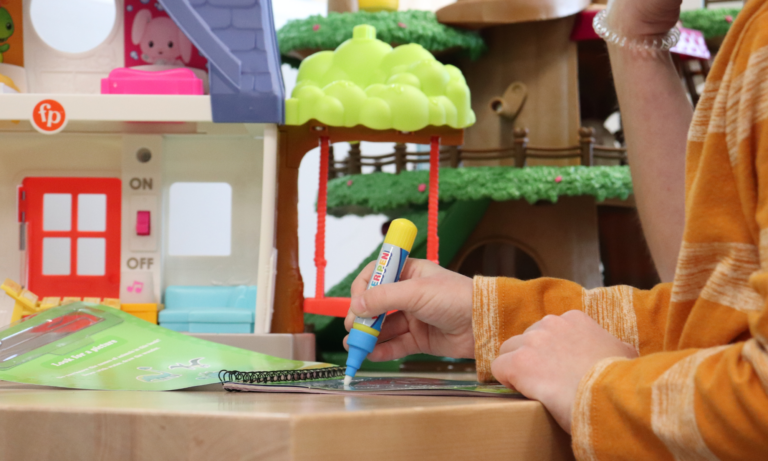Helping Hands Family (HHF) understands that everyone desires human connections. Children and teenagers with autism want interaction with their families and peers – as all kids do.
Dr. Vanetta LaRosa, Ph.D., BCBA-D, LBA and Executive Clinical Director for Helping Hands Family, has served children with Autism Spectrum Disorder (ASD) for most of her life.
As a child, Vanetta befriended a neighbor boy that her parents thought was troublesome. She patiently observed him, learned his needs, and found she enjoyed being with him. From this relationship, she deliberately chose her passion and career to bring awareness, understanding, and support to people with diverse learning capacities.

She, and other clinicians at HHF, rely on Applied Behavior Analysis (ABA) therapy to help these children because it provides:
• a proven scientific foundation for practitioners
• evidence-based practice
• data gathered during instruction
• highly personalized intervention
“It makes all the difference for the kids and their parents who deserve to know that we understand their children,” says Dr. LaRosa. This is the story of one child’s triumph, and his mother’s joy. Names have been changed to protect privacy.
Brody
“Guess what happened today!” Brody’s therapist Julie gushed.
“What?” his mother, Sandra, asked.
“Brody clapped all by himself during our game today! Then he kept clapping when it was over. He was so cute, jumping when he got stars on his chart.”
Julie continued, “He chose three little airplanes from the prize box, one for every five stars. ”He’s been fascinated with planes since last January when we got stuck in the airport for six hours waiting for a storm to pass”, Sandra said “He watched the planes taxi and line up for takeoff. Our whole family was tired and grumpy, but Brody was in heaven!” Sandra laughed and talked more about her son, then said goodbye.
Opening Doors to Connection
Julie uses ABA therapy to help children connect with teachers, friends, and family. She employed a hand-over-hand technique to help teach Brody and other children to tap on the table with his fingers, make fists to thump the table (boom), clap his hands, and wave them back and forth (swishy).
The game is rhythmic and fun, with the therapist, aides, and other children chanting and making hand motions.
Stars are awarded generously each time they complete a round, even for children who need help.
The idea is to make sure these little children are successful during each round. ABA therapy opens doors for children with ASD to communicate through positive reinforcement.
Developed through scientific methodology and used by many clinicians worldwide, HHF is an ABA therapy provider for children with autism in New York, Pennsylvania, and New Jersey.
Growth Brings Rewards
In 2004 Dr. LaRosa created the practice that would later become Helping Hands Family, providing excellent services to hundreds of clients who came to her by word-of-mouth referrals.
With her positive results, she quickly developed an extensive caseload and a remarkable track record. Dr. LaRosa is passionate about helping not only children with learning diversities, but their parents and families. She believes that everyone has a right to be taught in ways they respond the best and that caregivers deserve exceptional support.
Children with ASD often need to connect differently than their neuro-typical peers. With ABA therapy, they learn to interact during sessions. Repetition and practice help many children with autism learn to:
• Communicate through language
• Learn math concepts and perform calculations
• Enjoy playing with friends
• Pay attention in school
• Make choices
• Use good hygiene skills
Growing up can create a gap between kids with autism and their peers. As they develop into their tweens and teens, social challenges can become more noticeable and confusing, which is what ABA therapy can help to alleviate.
“All behavior is communicative,” says Dr. LaRosa. “It’s vital to understand that every child is eager to learn; we just have to figure out what pathway to connection works best for each one.”





